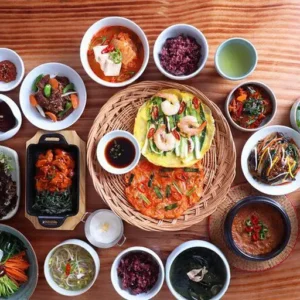A sacred occasion to seek blessings and celebrate the birth anniversary of Guru Rinpoche, regarded as the Second Buddha of Bhutan. In this happiest country on earth, mask dances are deeply rooted in tradition, and there are several opportunities to witness them. One of the most famous is the Punakha Tshechu, an annual festival held inside Punakha Dzong in Punakha District, western Bhutan.
Besides being the administrative center of the district, Punakha Dzong is the second-oldest and second-largest fortress in the country. Its historical and cultural significance has made it a must-visit landmark featured in almost every Bhutan travel guide.
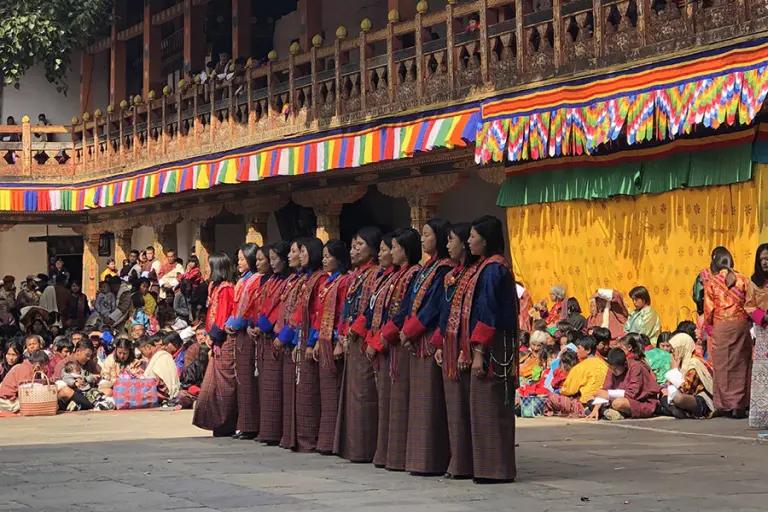
When is Punakha Tshechu Celebrated?
The Punakha Tshechu takes place every year in February or March, inside Punakha Dzong – Bhutan’s former capital. The event is usually scheduled during the first month of the lunar calendar and concludes with the grand Serda procession. This colorful ritual reenacts a 17th-century battle against Tibet, making it the only festival in Bhutan to feature such a procession.
More than just a celebration, it carries deep historical and cultural meaning. Locals gather in large numbers to witness the spectacle, pay their respects, and enjoy the festivities. For Bhutanese people, it is both a day of devotion and joy. For Buddhist pilgrims, it is also a sacred time for prayer and spiritual merit.
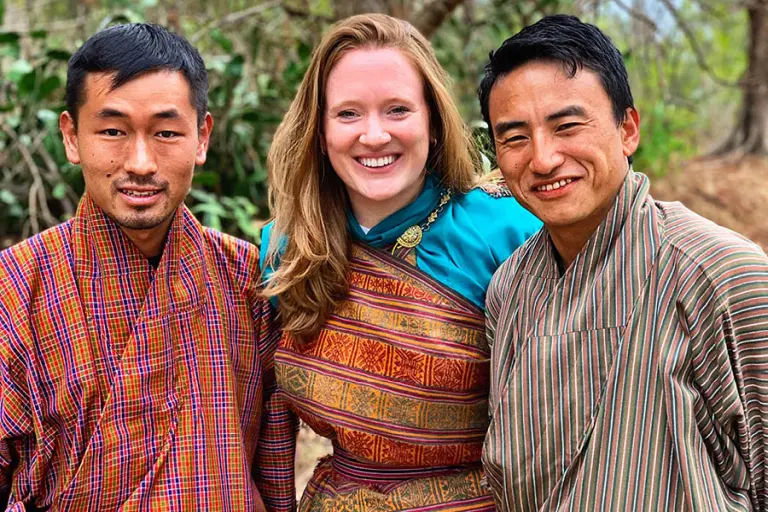
>> Dzongkha – The language of happiness in Bhutan
The Sacred Dances of Punakha Tshechu
The religious dances performed during Tshechu are called Cham dances. Over the course of three days, numerous dances take place, each rich in symbolism. Performers wear elaborate costumes made of bright yellow silk or richly woven brocade, decorated with intricate patterns and sacred symbols.
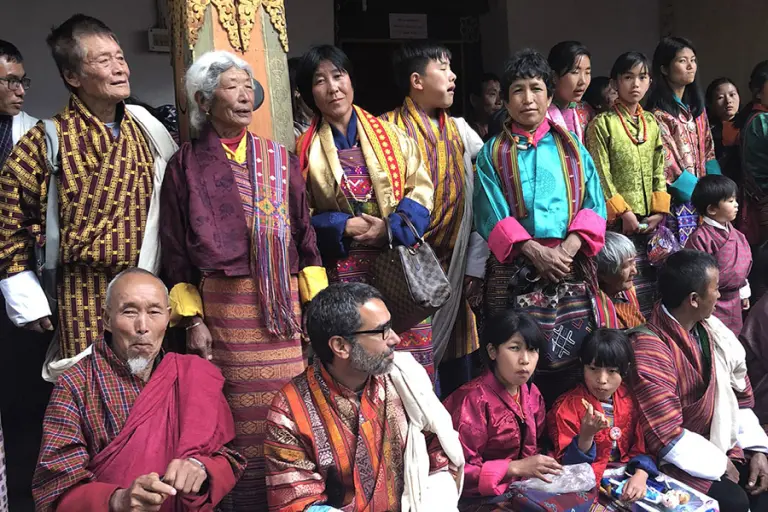
The masked dances are performed by monks dressed in vibrant brocades, their faces hidden behind striking masks. These performances are often accompanied by Buddhist chants, readings from scriptures, and even serenades. Some locals also offer visitors the chance to take photos for a small fee.
The dances are not just entertainment – they are considered offerings to Guru Rinpoche and protective deities. Many depict episodes from the life of Guru Padmasambhava, illustrating the triumph of good over evil. Monks often perform more graceful, maskless dances, while laymen – wearing masks – add vigor and athletic energy. Women also participate through devotional songs paired with simple choreography.
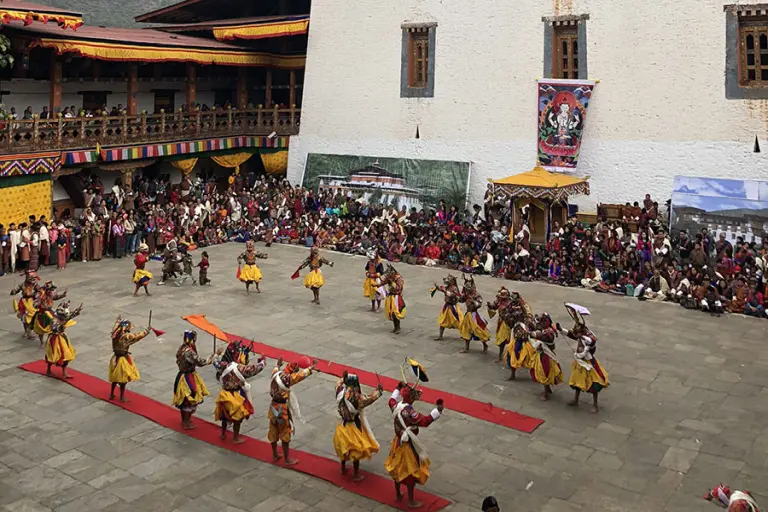
>> Religion in Bhutan – The mystical colors of spirituality
Cultural Importance and Pilgrimage
The word “Tshechu” means “tenth”, referring to the festival being held on the 10th day of the Bhutanese lunar month. This date is tied to the birth of Guru Rinpoche (Padmasambhava), the revered Buddhist master from the 8th century, honored in Bhutan, Nepal, and Tibet as the Second Buddha.
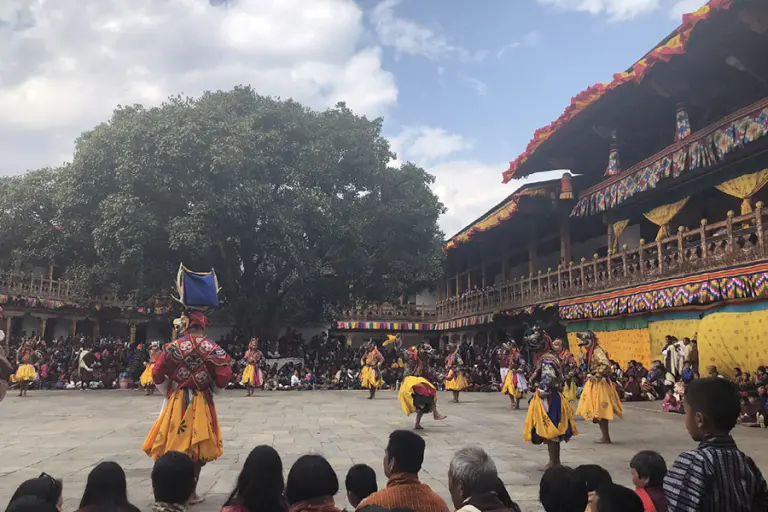
The Punakha Tshechu is one of Bhutan’s most significant festivals, celebrated across all 20 districts of the country. In Punakha, it holds special importance, as the dzong itself was built under the prophecy of Guru Rinpoche.
During the festival, schools and institutions remain closed so that everyone can participate. A highlight of the event is the unfurling of a giant thangka – a sacred Buddhist painting on silk or cotton – depicting Guru Rinpoche and other deities, believed to bestow blessings upon all who view it.
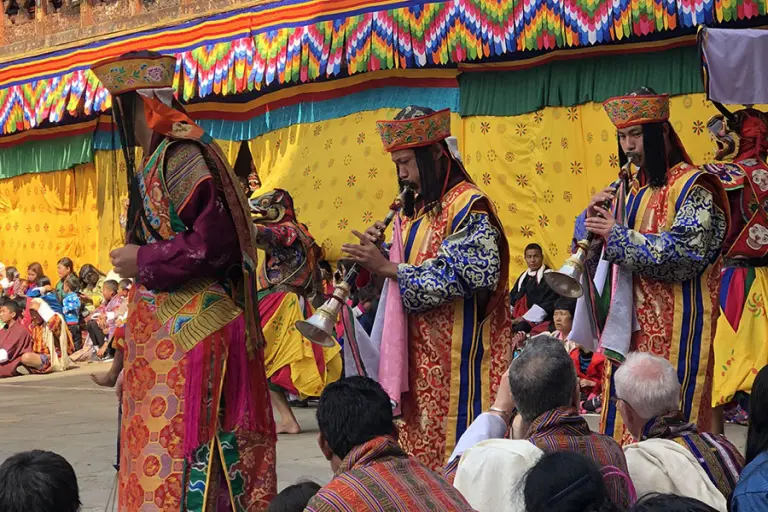
>> Unique cultural traits of the land of the Thunder Dragon, Bhutan
Travel Information
- Visa Requirements: Citizens of India, Bangladesh, and Maldives can visit Bhutan without a visa. All other nationalities must apply for a Bhutan visa in advance.
- Best Time to Visit: If you plan a trip in February or March, this is the perfect opportunity to attend the Punakha Tshechu and witness Bhutan’s living heritage.
- Experience: Visitors not only gain insights into Bhutanese traditions, spirituality, and culture but also enjoy a vibrant, colorful atmosphere perfect for photography.
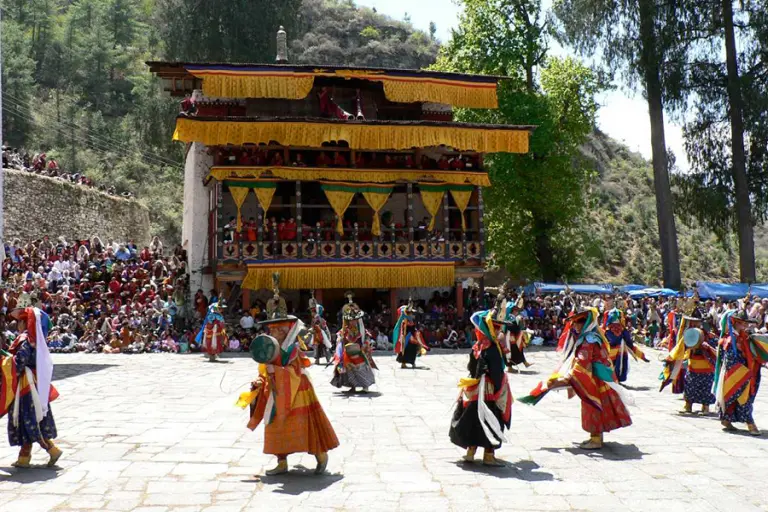
If you’re traveling to Bhutan, attending the Punakha Tshechu should be on your itinerary. It’s more than just a festival – it’s a spiritual journey into the heart of Bhutan’s culture and Buddhist devotion.




